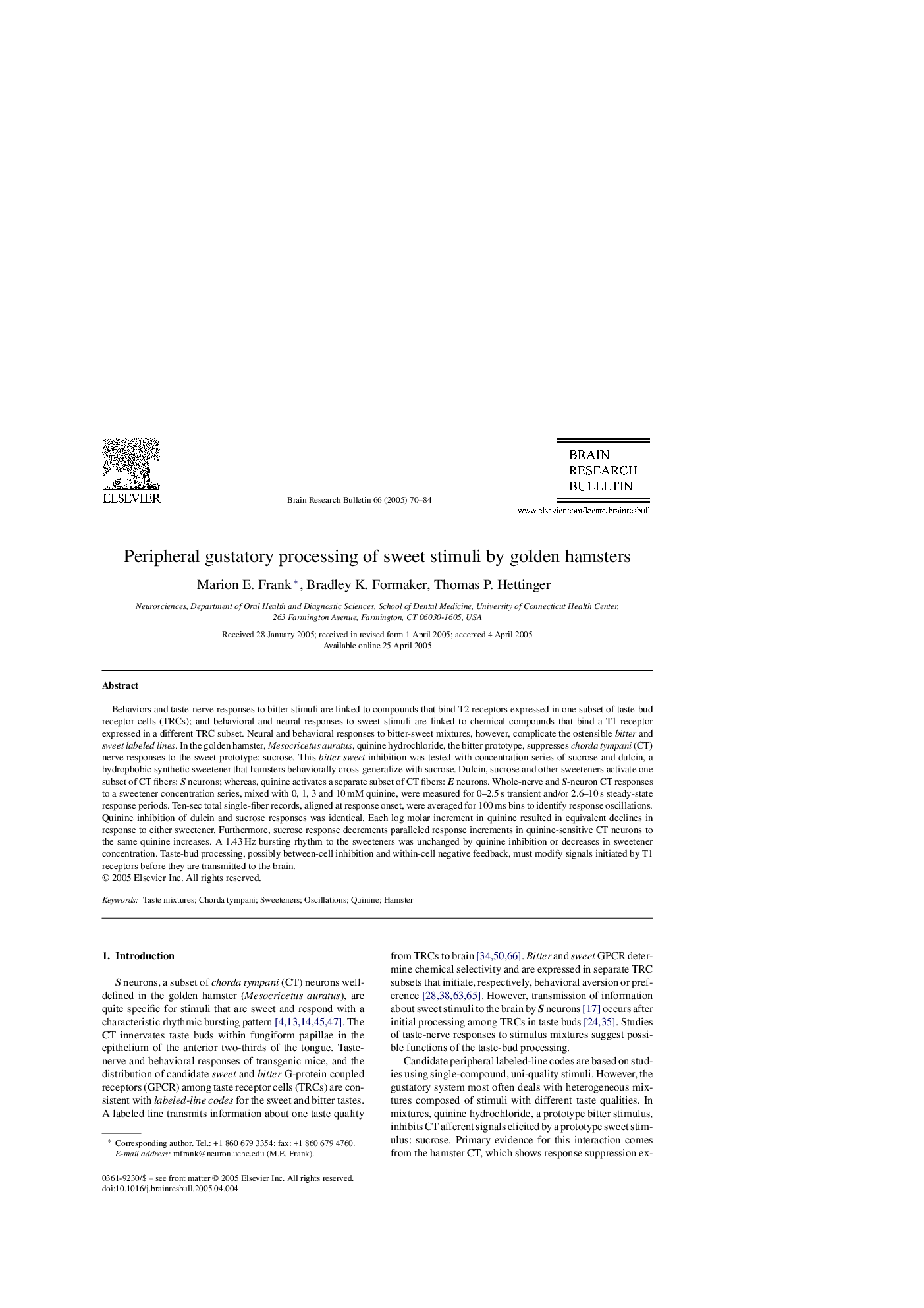| کد مقاله | کد نشریه | سال انتشار | مقاله انگلیسی | نسخه تمام متن |
|---|---|---|---|---|
| 9409312 | 1290862 | 2005 | 15 صفحه PDF | دانلود رایگان |
عنوان انگلیسی مقاله ISI
Peripheral gustatory processing of sweet stimuli by golden hamsters
دانلود مقاله + سفارش ترجمه
دانلود مقاله ISI انگلیسی
رایگان برای ایرانیان
کلمات کلیدی
موضوعات مرتبط
علوم زیستی و بیوفناوری
علم عصب شناسی
علوم اعصاب سلولی و مولکولی
پیش نمایش صفحه اول مقاله

چکیده انگلیسی
Behaviors and taste-nerve responses to bitter stimuli are linked to compounds that bind T2 receptors expressed in one subset of taste-bud receptor cells (TRCs); and behavioral and neural responses to sweet stimuli are linked to chemical compounds that bind a T1 receptor expressed in a different TRC subset. Neural and behavioral responses to bitter-sweet mixtures, however, complicate the ostensible bitter and sweet labeled lines. In the golden hamster, Mesocricetus auratus, quinine hydrochloride, the bitter prototype, suppresses chorda tympani (CT) nerve responses to the sweet prototype: sucrose. This bitter-sweet inhibition was tested with concentration series of sucrose and dulcin, a hydrophobic synthetic sweetener that hamsters behaviorally cross-generalize with sucrose. Dulcin, sucrose and other sweeteners activate one subset of CT fibers: S neurons; whereas, quinine activates a separate subset of CT fibers: E neurons. Whole-nerve and S-neuron CT responses to a sweetener concentration series, mixed with 0, 1, 3 and 10Â mM quinine, were measured for 0-2.5Â s transient and/or 2.6-10Â s steady-state response periods. Ten-sec total single-fiber records, aligned at response onset, were averaged for 100Â ms bins to identify response oscillations. Quinine inhibition of dulcin and sucrose responses was identical. Each log molar increment in quinine resulted in equivalent declines in response to either sweetener. Furthermore, sucrose response decrements paralleled response increments in quinine-sensitive CT neurons to the same quinine increases. A 1.43Â Hz bursting rhythm to the sweeteners was unchanged by quinine inhibition or decreases in sweetener concentration. Taste-bud processing, possibly between-cell inhibition and within-cell negative feedback, must modify signals initiated by T1 receptors before they are transmitted to the brain.
ناشر
Database: Elsevier - ScienceDirect (ساینس دایرکت)
Journal: Brain Research Bulletin - Volume 66, Issue 1, 15 July 2005, Pages 70-84
Journal: Brain Research Bulletin - Volume 66, Issue 1, 15 July 2005, Pages 70-84
نویسندگان
Marion E. Frank, Bradley K. Formaker, Thomas P. Hettinger,